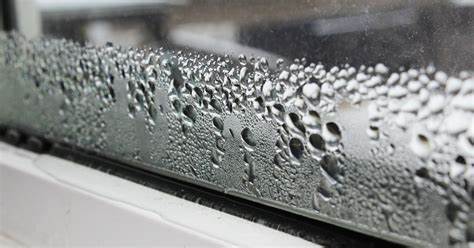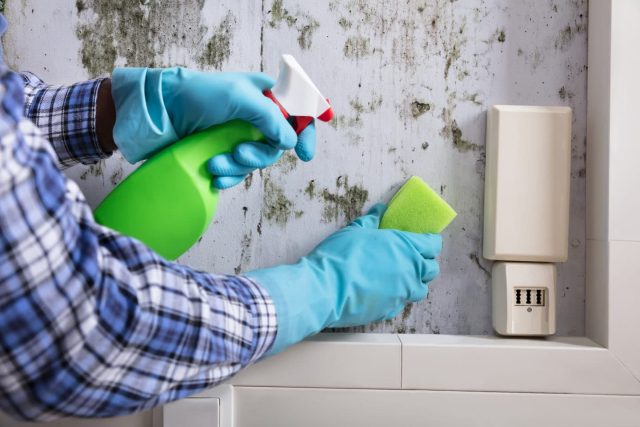Damp and Condensation
There is always some moisture in the air, even if you can’t see it.
When warm moist air cools down or hits a cold surface drops of water appear – this is condensation. This is
what happens when your bathroom mirror steams up and when your windows mists up.
It happens all the time everywhere.
Where it comes from
Your body produces moisture all the time, when you breathe and sweat.
We also put lots of moisture into the air when:
- we take a bath
- we take a shower
- we dry our clothes indoors
- we cook or wash the dishes.
Bottled gas heaters and paraffin heaters also produce a lot of moisture.
This moist air travels through your home and when it comes into contact with a cool surface, like a window, it will condense.


How to remove mould
If caught early mould can be easy to remove. You can normally wipe it off with a disposable cloth using household cleaner or a fungicidal wash which carries a Health and Safety Executive approval number.
Wipe over the area again every few days using diluted household cleaner to stop the mould growing back. It works best when it becomes part of your regular cleaning routine.
Tips on preventing mold and condensation
- keep the kitchen door closed when cooking and open windows
- keep lids on pots and pans when cooking
- if you have an extractor fan in the kitchen and bathroom make sure you use it
- keep the bathroom door closed when having a bath and leave window open after bathing
- when running a bath – run cold water first and hot water last to reduce steam
- don’t overfill cupboards and wardrobes – make sure air can circulate
- don’t keep furniture and beds hard against walls
- keep your heating on low throughout the day in cold weather
- avoid using flue-less gas or paraffin heaters
- when using a tumble dryer make sure the hose is put out of a window or door
- keep a window open when drying clothes indoors
- don’t dry clothes over warm radiators
Keep your home warm
If your home is warm condensation is less likely to appear.
• try and maintain a little heat throughout your home especially during cold weather
• don’t trap heat – avoid placing large pieces of furniture in front of a radiator this prevents the heat from circulating
• keep curtains above radiators
• thick curtains stop heat escaping – remember to close them at dusk
• keep curtains open on sunny days to help warm rooms
• keep doors open in rooms that get lots of sunlight –this will allow the warm air to circulate in your home
